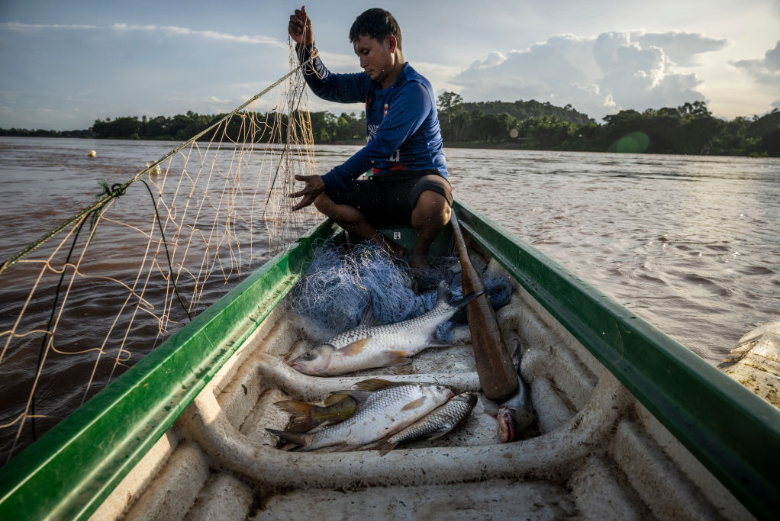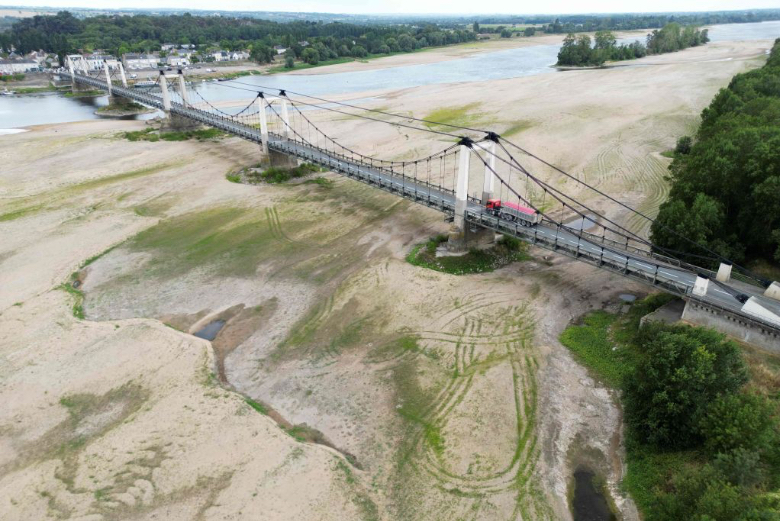Billions of years before we invented running water, nature had already done so. Rivers are the veins that nourish landscapes, their people and their activities. But we are putting them under increasing stress, often in the mistaken belief that anything less than harnessing their flow means throwing water into the sea. Today, they also face climate change, with serious consequences for the people who live in their basins. World Rivers Day, celebrated on the fourth Sunday of September since 2005, is an opportunity to highlight our relationship with rivers, their many benefits and the threats they face.

Humans might have existed without rivers, but it is hard to imagine societies without them. The first civilisations arose around the Nile, the Indus, the Ganges, the Yangtze and the confluence of the Tigris and Euphrates. As soon as we learned to harness rivers, we began to modify them: there is a 4,500-year-old dam on the Nile near Cairo. From providing water for all kinds of uses to using them as communication routes or sources of energy, to controlling their flow, the modification of rivers is one of the oldest branches of human engineering, making previously arid regions such as the Middle East or southern California habitable and fertile.
Dependency and overexploitation
But while their importance is obvious, we may not appreciate just how dependent we are on them. According to the World Wildlife Fund (WWF), rivers support a third of the world’s food production, not only through irrigation, which accounts for 70% of the water used by humans, but also through the nutrient-rich sediments they carry, and through fishing and fish farming, the freshwater versions of which account for 19% and 68% of the total, respectively. Forty per cent of fish consumption depends on rivers.

Not surprisingly, we have massively overexploited them. According to a 2019 study, only a third of the world’s 246 longest rivers remain free of human interference, most of them in Africa, Asia and South America. In the developed world, these free-flowing rivers, which ecologists liken to wilderness areas, are a rarity: in the UK, only 1% of rivers are free of artificial barriers. And although river engineering dates back to the dawn of civilisation, the consequences of this and other phenomena such as pollution, over-abstraction, invasive species and sand mining have been exacerbated in recent times: since 1970 we have lost 83% of freshwater wildlife, according to the WWF—a loss far greater than that of marine or terrestrial ecosystems.

The character of rivers as sources of biodiversity is inherent in their very nature and, strangely enough, is often ignored. It was only in the 1970s that people became aware of the need to maintain a minimum flow in order to preserve their ecological function. Since the 1990s, scientists have refined models to help determine the environmental flow of rivers. And while these prescriptions sometimes clash with the needs of farmers, who understandably demand more water when faced with drought pressures, experts warn that environmental flow not only sustains species populations but is a prerequisite for ensuring the long-term services of rivers, including those they provide to human communities such as agriculture. Since the Brisbane Declaration and Global Action Agenda on Ecological Flows in 2007, many countries have incorporated the concept into their policies.
The impact of climate change
Climate change has been added to the list of stressors on rivers, yet its impact on watercourses is still only partially understood. In the words of World Meteorological Organization (WMO) Secretary-General Petteri Taalas, “the impacts of climate change are often felt through water—more intense and frequent droughts, more extreme flooding, more erratic seasonal rainfall and accelerated melting of glaciers—with cascading effects on economies, ecosystems and all aspects of our daily lives. And yet, there is insufficient understanding of changes in the distribution, quantity, and quality of freshwater resources.” Rivers, in turn, regulate climate change by transporting large amounts of carbon.

In its first report on the state of global water resources, published in 2022, the WMO shows that the area of below-normal river flows in the previous year was twice the 30-year average, although events such as La Niña—a cooling of the equatorial Pacific surface—contributed to these anomalies. Reduced flows have affected major river basins such as the Amazon, Mississippi-Missouri, Rio de la Plata, Niger, Nile and Congo, as well as large regions of Russia, Siberia and Central Asia. The decline is linked to severe droughts, particularly in East Africa in recent years, but also to catastrophic floods, such as those that hit China, India, Western Europe and other regions in 2021.
In the 21st century, 3.6 billion people suffer from inadequate access to water at least one month a year, and this figure is set to rise to over five billion by 2050. Seventy-five per cent of the world’s irrigated crops are grown in water-stressed areas. Rivers are our water, our food and our health, but they are also the most degraded ecosystems in the world today. And their destruction is on us.
Comments on this publication